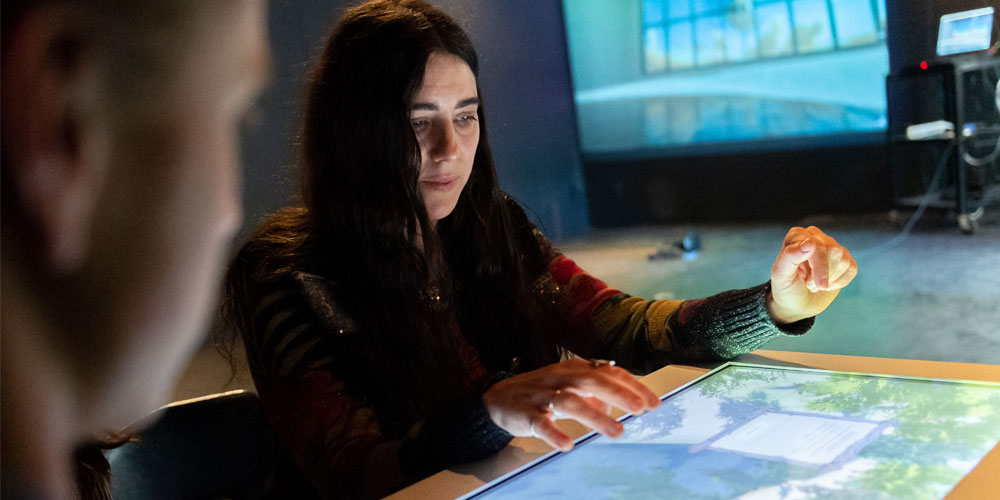
Aleksandra Dulic in the Centre for Culture and Technology
Teaching creativity and the creative process is about building capacity and confidence to approach a holistic way of finding solutions to challenges we face as a society. This is a philosophy that guides Aleksandra Dulic, professor of visual arts and digital media, in the Bachelor of Fine Arts and Media Studies programs.
Over the last ten years that she has been with UBC Okanagan, Dulic has created a number of research projects focused on environmental wellbeing and community resilience. She works with multiple community partners and funding agencies, allowing her to form a team of faculty and student researchers to complete the projects that address important community initiatives.
With CFI Funding in 2011, Dulic built the Centre for Culture and Technology (CCT), a space on the UBC Okanagan campus that houses her research projects. There are a number students, at both the graduate and undergraduate levels, working in the CCT on multiple projects.
“Having this space available is a valuable learning experience for our students. This allows them to learn about interdisciplinary and creative ways of working within large teams in the context of how arts and culture make significant contributions to socia-enironmental wellbeing.” she explains.
One of the large four-year projects, Water Ways, involves working towards building a virtual world that visualizes what the Okanagan may have looked like pre-contact and pre-development. They are looking at representing the rate of change that we see in our local environment, and what future development may look like based on the past.
The student researchers are looking at archival records, such as historical descriptions, Indigenous knowledge, and photos, that can give them insights as to what the landscape and waterways used to be, how development has changed that, and how can we mitigate the effects that development has had in our local environment for the resilient futures. The research team is investigating how to best communicate with the public, stakeholders and decisionmakers regarding the way the local plants and animals make a contribution to the lands ability to hold and clean water ways in the Okanagan, what restoring the flat plains may look like, and how that will add to the resilience of the water.
The culmination of all this work will be an exhibition at the Kelowna Museums in early 2021. The team is preparing three components for the installation – a physical playground with interactive elements for children, a virtual interactive storybook about the Okanagan region, and a generative documentary about successful water and restoration projects, which will have interviews with a variety of people to obtain indigenous and non-indigenous perspectives.
One student worked for two years to do archival research in the museum and library archives in Kelowna and Penticton to come up with historical recorded accounts of the environment in the area, all of which will be put into the visualizations as well as information panels. Other students on the project are creating 3D models of every species from the area.
“In our exhibit, we will be featuring successful local restauration projects as a model for the future resilience in the Okanagan. One of these projects include Okanagan Nation Alliance (ONA) and Traditional Ecological Knowledge led successful restoration of spawning and rearing habitat for salmon in the Okanagan Basin that has taken place over the last 20 years.” Dulic explains.
This project included integrated effects across Okanagan Nation Alliance, Indigenous communities, different levels of local and federal government to develop best management practices based on bridging the Traditional Ecological Knowledge with Western science approach to guide these restoration works. The Indigenous community, in collaboration with the government worked together to make changes to stop the decline of the salmon, and now we can see significant population of spanning sockeye salmon in the Onega creek systems. This project not only built environmental resilience, but also brought science and traditional knowledge together to build quite robust ONA fisheries.
The Water Ways team is looking at why that project succeeded, and how they can conceive the restoration project in the same way, to inform the public about best practices for local social and environmental resilience.
Building the team
The creative process can help the community, and the work of these research teams provides value to real world challenges.
“We look at opportunities and align our capacity with the needs of the community. The added value is that there is a real community output and connections made.” says Dulic.
For our graduate students, depending on where they are in the process of their discovery, they find a way to align the work on the research project with their thesis. This work becomes a part of their thesis topic and the student interests, which informs what they are doing.
The student researchers are from many programs on campus, creating an interdisciplinary team. There are students from fine arts, science, media studies, computer sciences and engineering. They work together creatively to articulate their ideas and make these available to the public in a way that they are accessible to many generations and knowledge bases.
“My job here at the university has been to come up with interesting projects and to obtain funding to give students research positions to increase their learning capacity.”
The students that work within the CCT change from time to time, when they complete their programs, but the capacity of the project needs to be maintained, which is an interesting challenge.
She explains that having more senior students training the junior students is a real value. There is cross-training involving multiple faculty members, research associates, doctoral, masters and undergrads, all working to transfer knowledge to each other. It is a layered approach, training at the varied levels of research and how they cross-pollinate to other students and faculty members at various experience levels is an important part of their process.
Research and teaching
For Dulic, the way she leads her students in her research projects, does not differ from how she teaches her students in the classroom.
“I see the classes I teach as a learning journey. I have my students focus on the creative process, much like we do with our research projects.” She explains.
Instead of giving specific projects to complete in her upper level visual arts classes, she works with her students to discover their values, personal voices, and the importance of the projects they want to work on. Everyone in her classes brings their personal talents and abilities, and they workshop and brainstorm their ideas together as a group. In that context, students learn from each other and the creative environment in the class. Topics are introduced based on the student’s needs and ideas.
“I feel that I am as much of a student as I am the teacher. Everyone in the class takes on that role – teaching and learning together. We talk about different theories of media, art for social change, pictorial form or other relevant theoretical frameworks, and work together to cover topics appropriate for the level of instruction, all framed by student objectives.”
In the university environment, there is room to make mistakes, and to try things that may not work, which allows for time to learn how to build something that works – something that has impact for the larger community.
“In the process we imbed room for failure, which is how you build a good project as you can refine your process and find things that work for the project.” she adds.
Understanding how to work collaboratively prepares students to deal with challenges for the future. She points out that developing this capacity in the creative world, prepares her students to go out into the community and be better prepared for challenges that they may not have been able to anticipate.
“I want my students to be able to build their voice, have a grounding in what they are saying, and understand how will that make a contribution to the knowledge in their chosen field.”
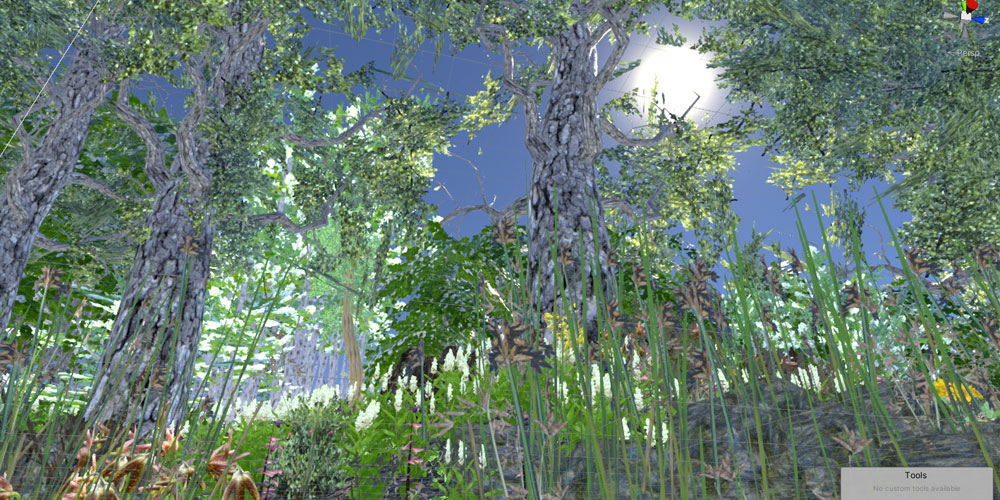
Digital Visualizations Screenshot from the Water Ways project
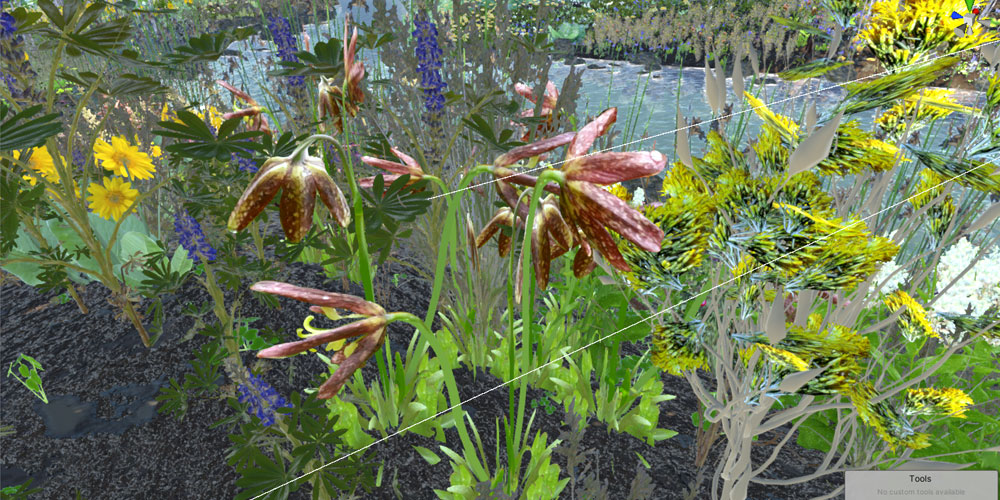
Digital Visualizations Screenshot from the Water Ways project
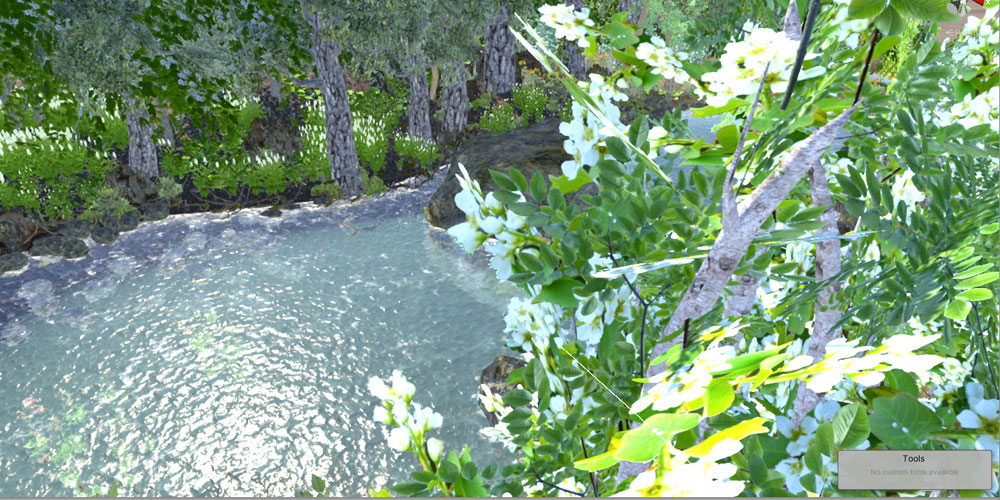
Digital Visualizations Screenshot from the Water Ways project
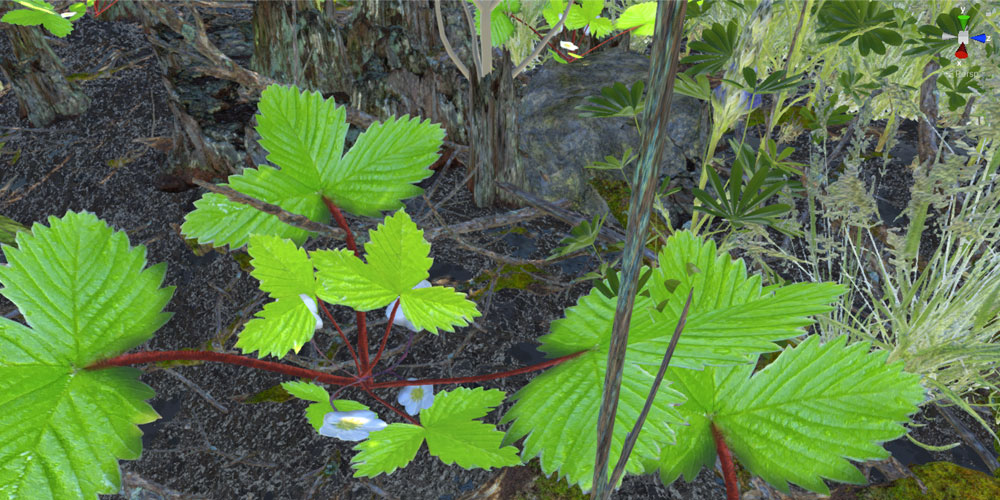
Digital Visualizations Screenshot from the Water Ways project
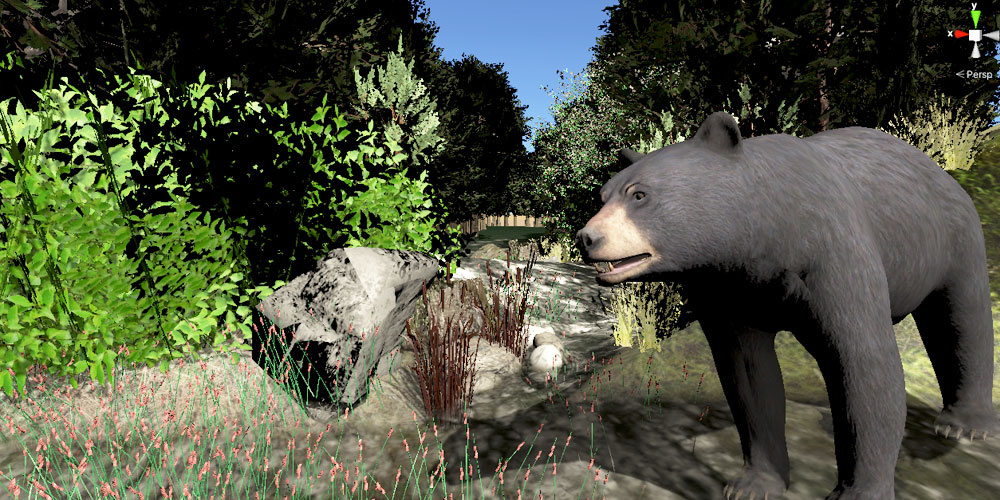
Digital Visualizations Screenshot from the Water Ways project